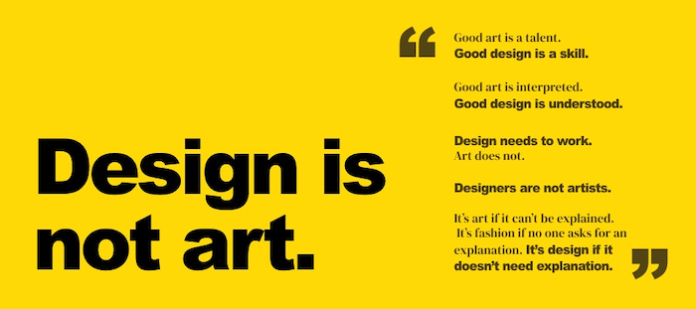According to Vanessa Bosman, Managing Director at Just Design SA, following numerous local and international design awards in 2024, the creative industry is once again confronting longstanding issues: the legitimacy of these awards followed by the true value of creative work, and consequently, the issue of unfair compensation. While these topics have been discussed for decades, nothing has changed, and we are running out of steam.
Just Design have been exploring alternative methods to tackle some of the issues — focusing on consumer validation and outcomes-based costing models. In so doing, I believe that we might have uncovered the underlying cause for our industry woes.
‘Commercial art,’ or design emerged in the 1940s as a by-product of the art world. However, as it developed and evolved, it became very clear that it served an entirely different purpose. Despite this shift, the connection to art persisted and we have failed to clarify the distinction.
Design is not art. I think that this engrained age-old misconception lies at the heart of our troubles today. Sure, some designs come out looking artsy, but the process is the exact opposite. Design is like science in a cool jacket, it’s all about cracking the code on specific problems, not just sparking deep thoughts or wild emotions. Art loves to push boundaries and stir the pot, but design? It’s the ultimate problem-solver, here to cut through the chaos, make life easier and serve up solutions that work for the intended audience.
Where art raises questions, needs explanation and sends different messages to everyone, design offers solutions, sends the same message to everyone, and needs no explanation. Design is the process, one that requires a deep understanding of the problem at hand, the audience, and the desired outcome. Without this, there can be no viable solution. If we strip it down to basics – design should be objective – with a process that is analytical and pragmatic. Designers aren’t necessarily all artistic – skills are needed over talent. When design is treated like art, it becomes subjective, and its value is often judged based on aesthetic preferences rather than measurable effectiveness. In contrast, good design can be evaluated with one single criterion: does it solve the problem?
We have developed a process that is both highly consumer-centric and as objective as possible. By involving consumers throughout the design process, gathering feedback and validation early and often, we can eliminate subjectivity from both the agency and client perspectives. This approach allows us to make data-driven decisions that predict how a design will perform in the market, providing reassurance and a higher degree of confidence in our solutions. So far, this method has given us positive results and continues to inform how we evolve our approach.
The creative industry places too much focus on the final product and not enough on the process of interrogation, understanding and problem-solving. Without this, we can’t even call ourselves designers. Most industry awards do not consider measurable results. How can we give a design an award without knowing its real-world performance? This lack of accountability has created a culture where agencies gear projects for awards entries over those that meet real needs and business results.
The only way out is through. We need to go back to basics and start designing again (in the true sense of the discipline). Design is the process. It’s what defines us and separates us from the art world; the one area that shouldn’t be compromised. That’s where the value lies – and the beginning of a solution.
JUST DESIGN
https://www.justdesign.co.za










